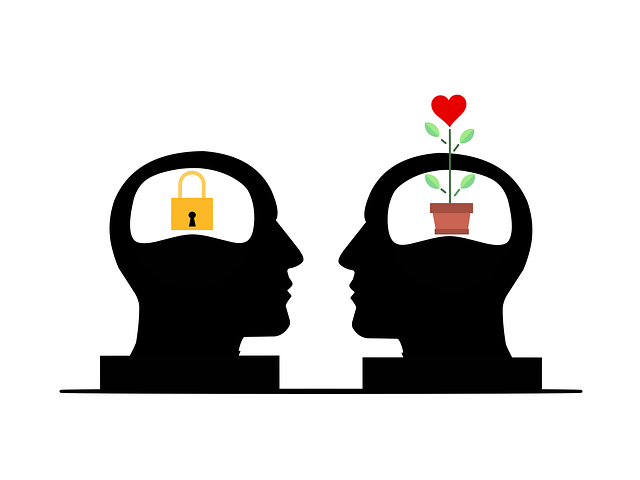The concept of “what you think, you become”—that your mind holds the power to shape your reality—is a universal truth found in philosophical, spiritual and psychological teachings across cultures.
As Buddha wisely stated, “All that we are is the result of what we have thought: it is founded on our thoughts, it is made up of our thoughts.” Simply put, the mind gives rise to thoughts, thoughts give rise to actions, and actions define who you are and how you engage with the world.
So how can you benefit from this knowledge? By learning to harness your thoughts, adopt a growth mindset and embrace positive thinking, you can manifest your ideal self. In this guide, you’ll learn to overcome self-limiting mental patterns, leverage the mind-body connection and transform both yourself and your reality.

Growth Mindset vs. Fixed Mindset
Your mindset comprises the beliefs, attitudes and mental frameworks that influence how you perceive and respond to challenges. It forms the foundation for your thought patterns, so before you adjust your thinking, you’ll need to adjust your mindset.
By understanding the difference between a growth mindset and a fixed mindset—and embracing the former—you’ll be ready to translate what you think into who you become.
Here’s a breakdown:
- Growth Mindset: A mindset that supports growth based on the idea that intelligence, talents and abilities are elastic and can be expanded and improved.
- Fixed Mindset: A mindset that limits growth based on the idea that intelligence, abilities and talents are static traits that can’t be changed.
The growth mindset better aligns with the idea of “what you think, you become” because it’s rooted in the idea that transformation is attainable through effort—and that where you are doesn’t necessarily dictate where you can go.

Why is Growth Mindset Important?
A growth mindset is one of the best ways to approach life’s challenges. Here’s why it’s important:
1. Fosters Resilience and Adaptability
In a world of constant change, a growth mindset allows us to adapt and persevere. People who believe setbacks are temporary and effort leads to improvement will push through challenges.
2. Encourages Lifelong Learning
People with a growth mindset will seek to create lifelong learning experiences so they are constantly evolving.
3. Boosts Self-Esteem and Confidence
With a growth mindset, people become more self-assured. Believing you can overcome obstacles builds confidence and motivates you to take on even more challenges.
4. Promotes Emotional Well-being
A growth mindset promotes emotional well-being by framing failure as a learning opportunity and adversity as a catalyst for growth. This reduces the anxiety and stress around individual outcomes.

How to Develop a Growth Mindset
Cultivating a growth mindset requires awareness, practice and consistency.
Here’s how to develop a growth mindset in three simple steps:
1. Awareness: Recognize Fixed Mindset Thoughts
Recognize when you’re locked in a fixed mindset. Catch yourself when you think, “I’m not good at this” or “I’ll never be able to do that.” Instead, think, “I can improve with practice.”
2. Practice: Take on Challenges
Instead of avoiding challenges, take them on as opportunities for growth. See them as a way to learn and push beyond your comfort zone. Every challenge you overcome builds confidence and resilience.
3. Consistency: Use the Power of “Yet”
One way to shift your mindset is to add “yet” to your fixed mindset thoughts. Instead of saying, “I can’t,” think, “I can’t yet, but I will.”

How to Apply Positive Thinking to Your Daily Life
Once you’ve embraced a growth mindset, try incorporating positive thinking into your daily routine. Positive thinking reduces stress, increases productivity, improves relationships and builds resilience in tough times, enhancing your perspective and improving your outcomes.
Here are some strategies for positive thinking:
1. Change Your Internal Dialogue
Pay attention to how you talk to yourself. Replace negative self-talk with positive affirmations. For example instead of thinking, “I’m really bad at this,” think, “I’m learning, and I will get better with experience.”
2. Practice Gratitude
Gratitude can rewire your brain for positivity. Begin each day by listing three things you’re grateful for, no matter how small. This trains your mind to focus on the good stuff.
3. Visualize Success
Visualize yourself achieving your goals. This simple mental exercise will help you stay focused and motivated.
4. Surround Yourself with Positivity
Your environment impacts your mindset. Surround yourself with positive influences—whether it’s supportive people, uplifting books or motivational content. Limit exposure to negativity that can drain your energy or derail your mindset.
5. Focus on Solutions, Not Problems
When faced with challenges, approach problems with a solution-focused mindset instead of a problem-focused mindset. Ask yourself, “What can I do to improve this?” instead of “Why is this going wrong?”

Benefits of “What You Think, You Become”
Now that you’ve learned to control your mind and manifest your reality, you’re ready to reap the benefits:
1. Improved Mental Health
Positive thinking reduces stress, anxiety and depression. By concentrating on uplifting thoughts and reinterpreting negative ones, you’ll cultivate a healthier mindset and improve your mental health.
2. Increased Productivity and Motivation
A positive mindset keeps you focused on your goals and inspires productive, proactive behavior. When you believe in your capabilities, you are more likely to take actions that propel you toward your objectives.
3. Better Relationships
A positive attitude influences your interactions with others. Demonstrating kindness, empathy and compassion fosters more fulfilling and harmonious relationships, as people are naturally attracted to positivity and optimism.
4. Personal Growth and Development
By aligning your thoughts with a growth mindset, you open yourself to ongoing learning and self-improvement. This perspective encourages you to embrace challenges and persist through difficulties, promoting lifelong growth.
5. Achievement of Goals and Desires
If your thoughts determine your reality, then visualizing success and maintaining a positive outlook can catalyze intention, action and ultimately achievement.

Bottom Line
The thoughts you think—positive or negative—affect who you become. By understanding the mind-body connection, embracing a growth mindset and thinking positively, you can translate your thoughts into the reality you desire.
Start by following the tips in this guide, and don’t be discouraged if it takes time to shift your mindset. Instead of telling yourself “I can’t manifest my reality,” tell yourself, “With patience and practice, I’ll master my thoughts and live the life I desire.”
This article was updated October 2024.





